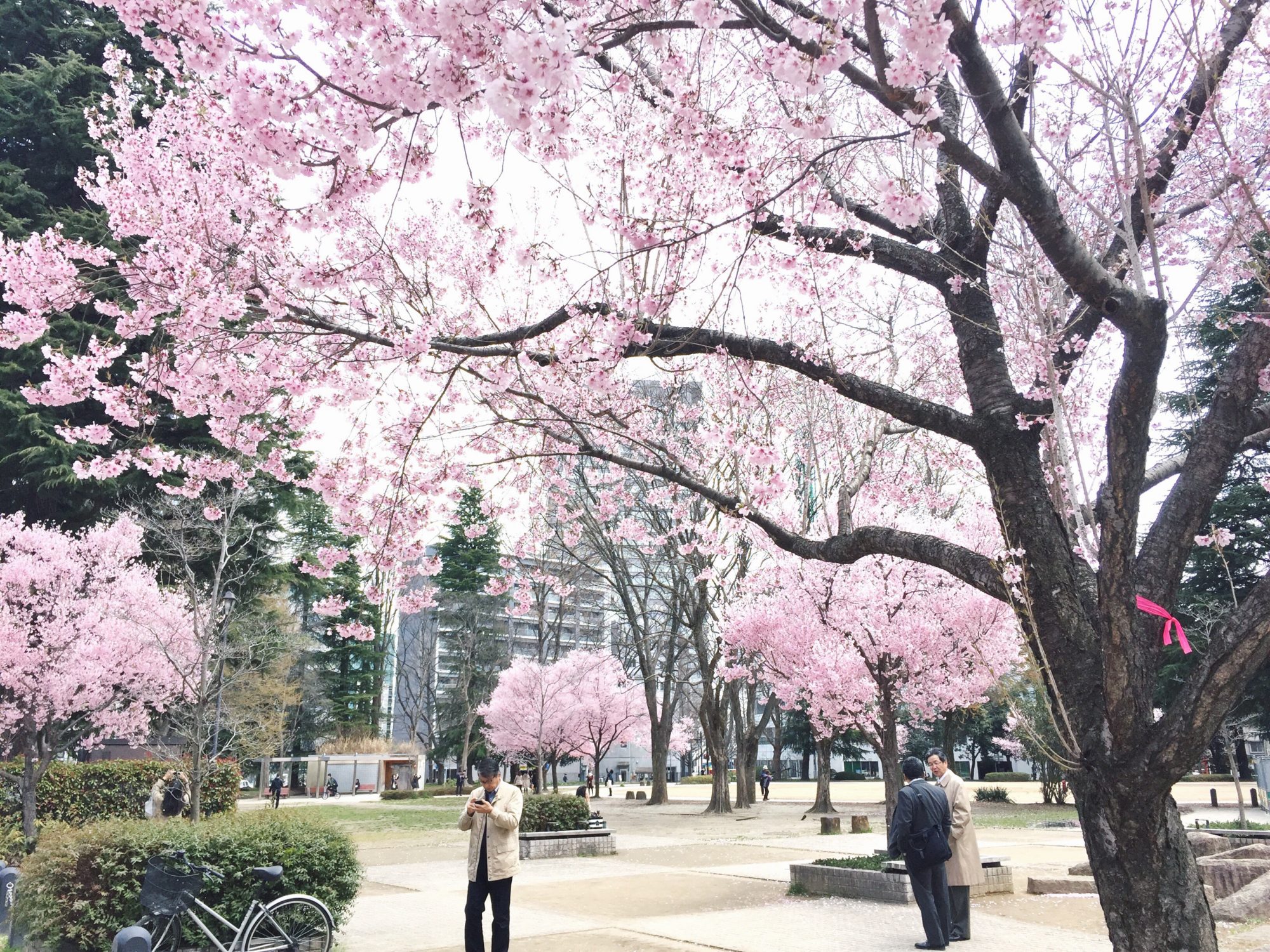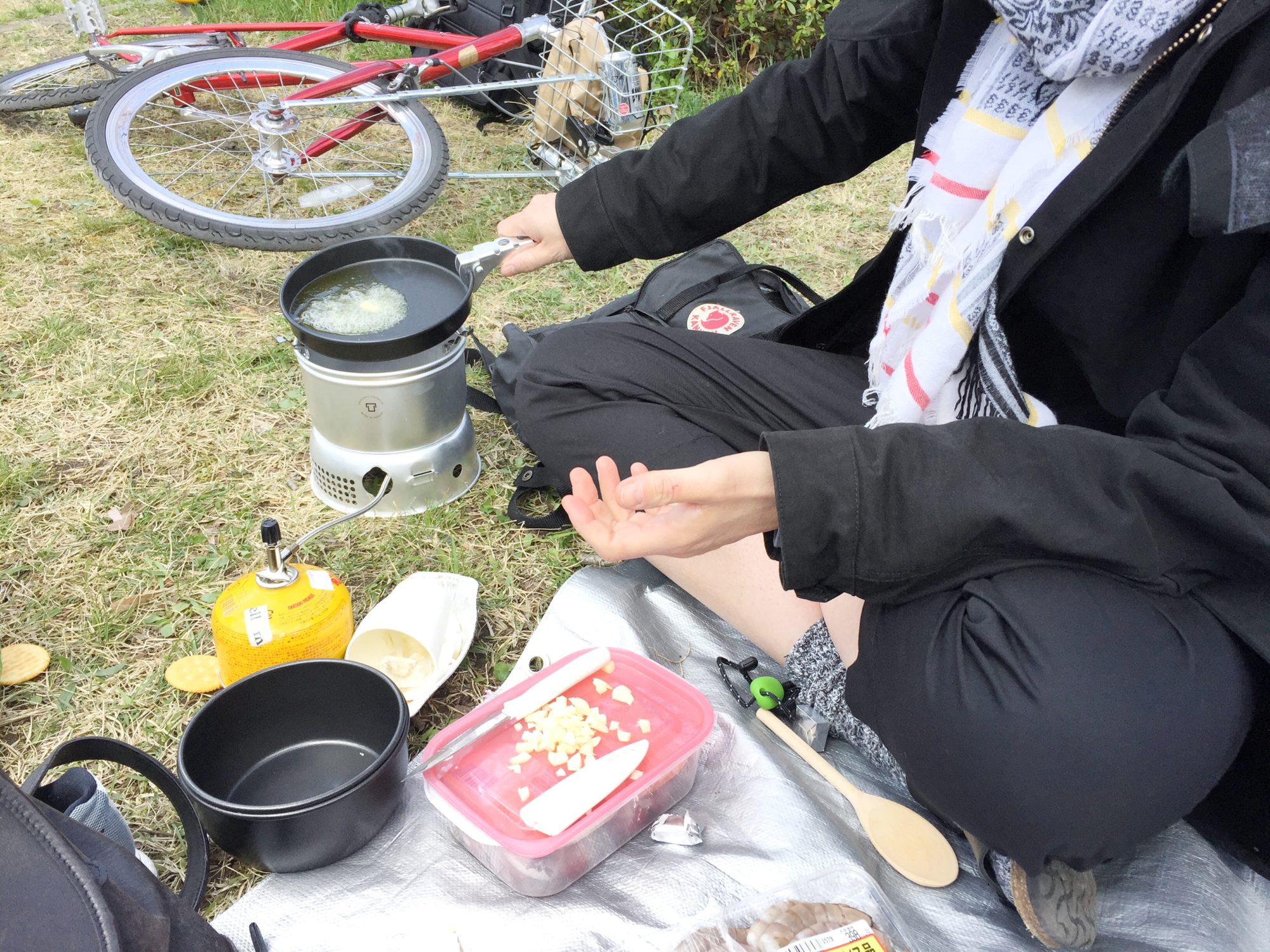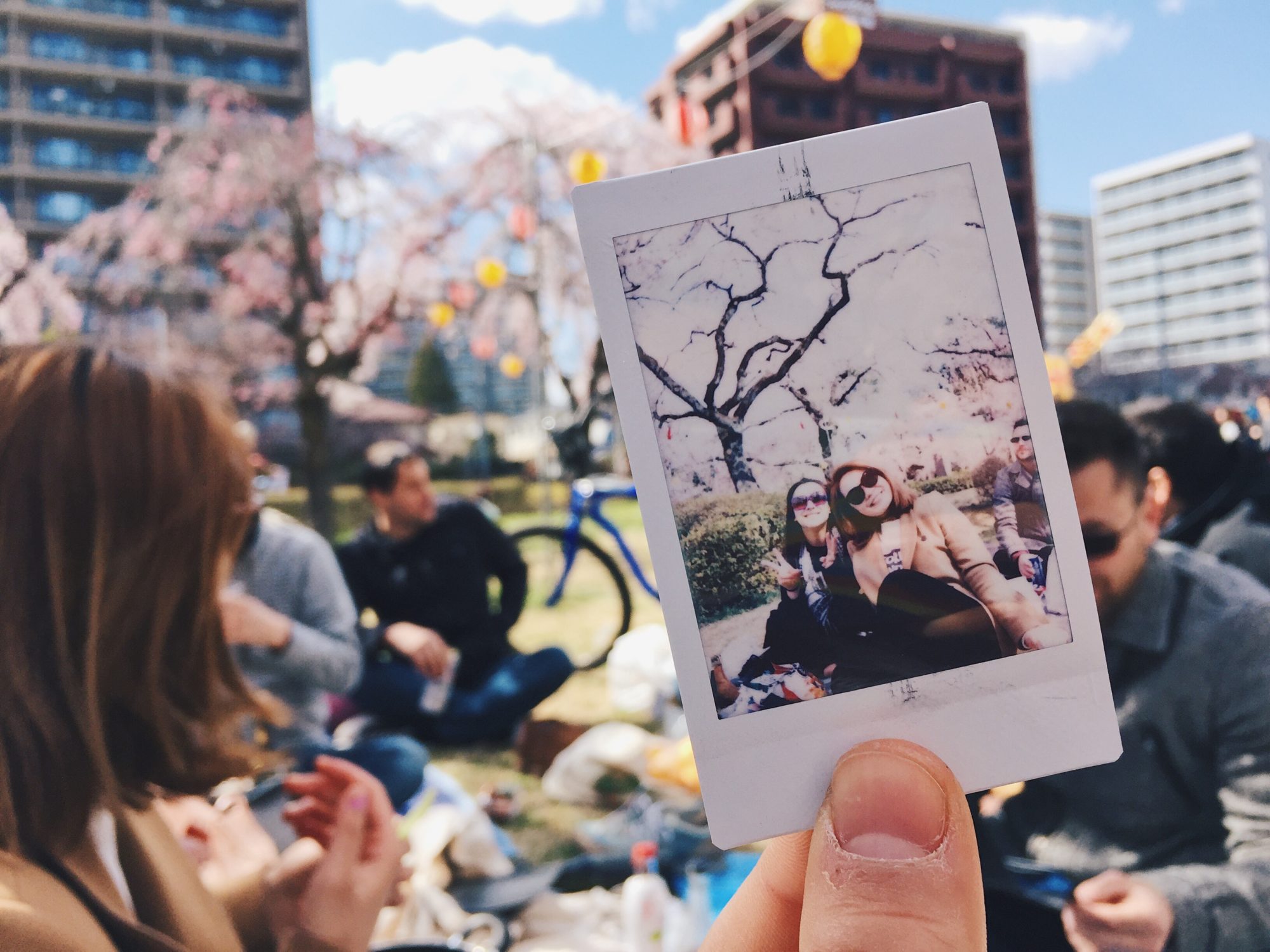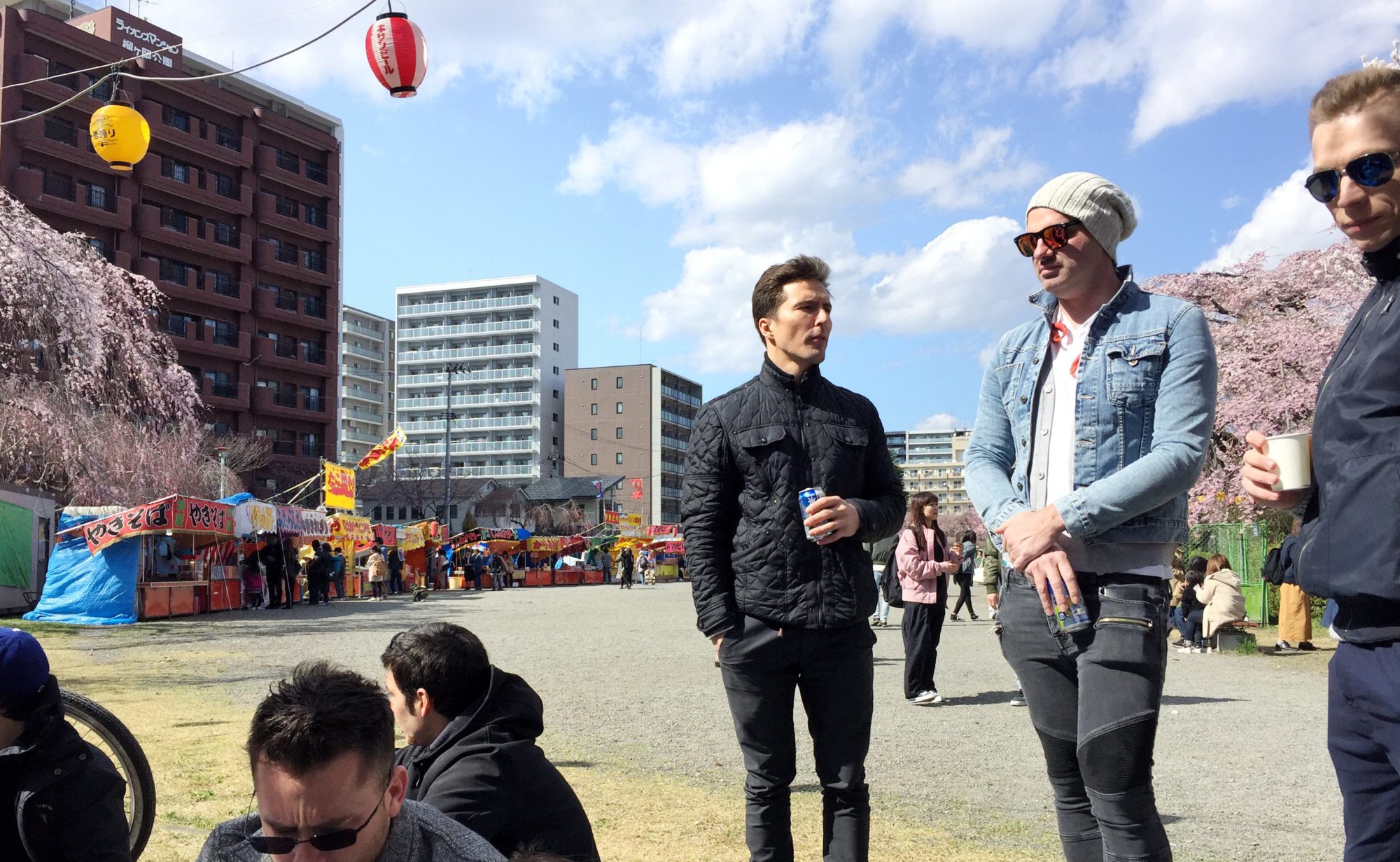A deceptively sunny day, I kept throwing on my jacket when the chilly wind blew, taking it off again when the clouds parted. We sprawled out on a patch of grass under the cherry blossom trees, on plastic blue tarps, the corners held down by various sneakers and stylish heeled boots.
Mothers chased their giggling kids around the field. They played in the bushes, under the hanging lanterns, ironically sponsored by Kirin, the Japanese beer company. Some of them would run up to us in groups, shyly shouting, “hello!” and running way, practicing the English words they learned in school.

‘Hanami,’ (花見) is a Japanese word which means, “flower viewing.” People will gather in large groups, either co-workers or friends and family, to spend the afternoon having a picnic in the park. In famous places like Ueno Park in Tokyo, it’s usually difficult to find any space on the grass. People will go days ahead to reserve the perfect spot, to bask in the sakura in full bloom for a couple of hours. A delightful ode to Japan’s national flower.
The bloom-life of the cherry blossom tree is short, usually around a week long. There’s all kinds of websites and maps dedicated to following the bloom, labeling the best spots and tracking the progression of the flowers up along the country. Predictions can’t be made too early though. It’s a delicate process through and through.
Originally gifted as a symbol of peace from Japan to the United States, the beautiful sakura trees were almost burned down. An American agriculturist found foreign bugs and diseases on the cherry blossom trees, nearly causing a diplomatic crisis. Tricky tricky, Japan. But despite all the hype, the cherry blossom capital of the world isn’t Japan, or even D.C. It’s actually Macon, Georgia (some old dude liked them and wanted more) with 300,000 Yoshino cherry blossom trees. AND, as Adele would say, rumor has it that these pink blossoms originated somewhere near the Himalayas, migrating later towards Japan.
…
During any Japanese festival season, you’ll find food stalls. The colorful shops beckon you with scrumptious smells and questionable things on a stick. Even if you bring your own food, it’s hard to pass up the delicious ‘fair food’ that Japan has to offer. You’ll find yakisoba, yakitori, takoyaki, various sweets and drinks, and more. To eat the weirdest things possible, I picked up boiled konjak balls and a beef intestine skewer. Yum.
Our area was covered in food. Sandwiches, rice balls, and bento boxes from the convenience store. Chicken meatballs and packs of salted nuts, a smorgasbord of meats and cheeses, passed around from hand to hand, everyone enjoying the taste of spring. A portable gas stove hummed, heating-up sake. Liters of beer, bottles of shochu and highballs, the clank of cans and plastic cups as we cheered, ‘kanpai!’ Then comes the peeling of shrimp. Yes, raw shrimp, fresh garlic, olive oil and the works, simmering in a pan atop a cooking stove. All in the middle of a park. Served with a fresh baguette. This was glamping at it’s finest.

The delicate aroma of Sakura danced through the air. One deep breath and you might understand why it’s the top perfume in the US, as Bath and Body Works’ ‘Japanese Cherry Blossom.’ In stores now!
Rice crackers tossed at each other playfully, sometimes caught in the mouth, followed by a cheer. It quickly progressed to a unicyclist kicking it from her foot. A circus even on a day off.
Our group stood out. Sporting sweet sunnies and boisterously loud conversations, we were stared at by the Japanese people as they walked by. But we were all there for the same reason; to enjoy the fleeting beauty of the cherry blossom trees.

